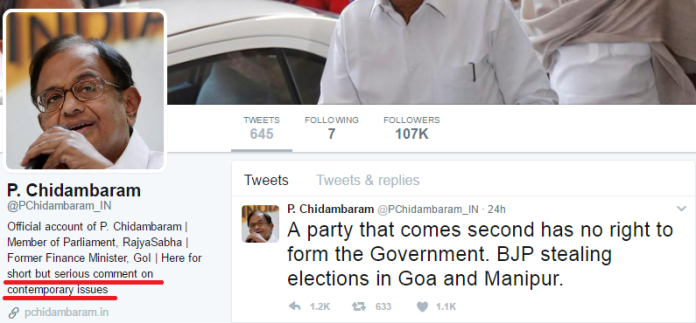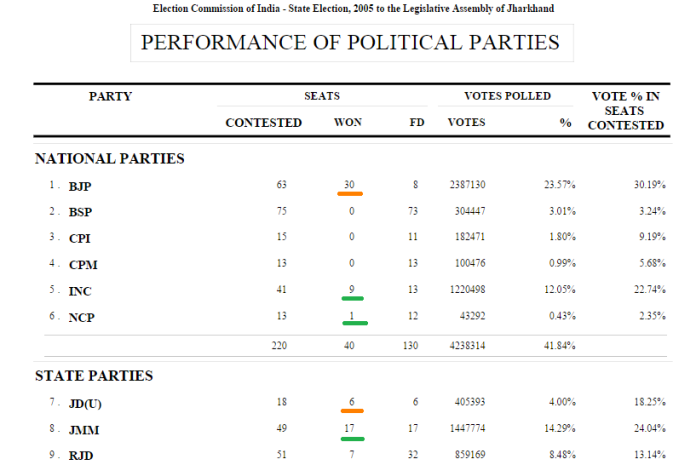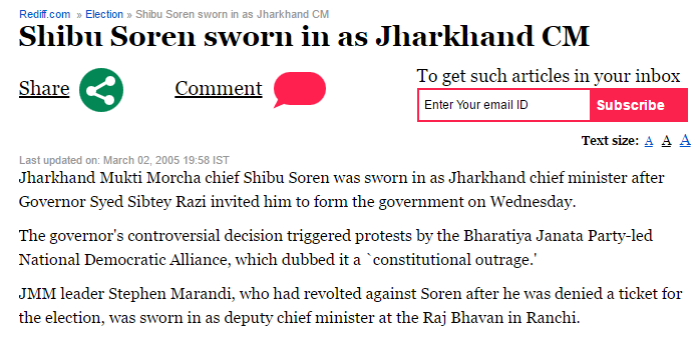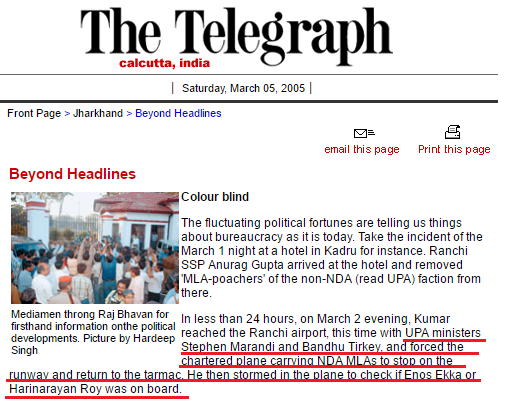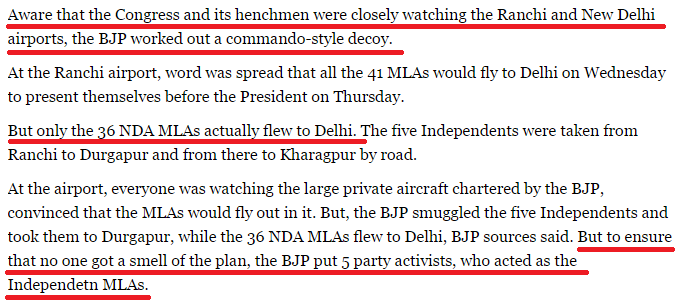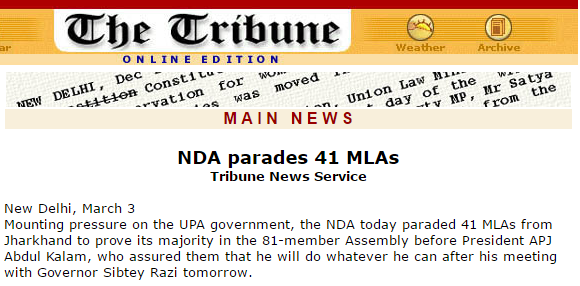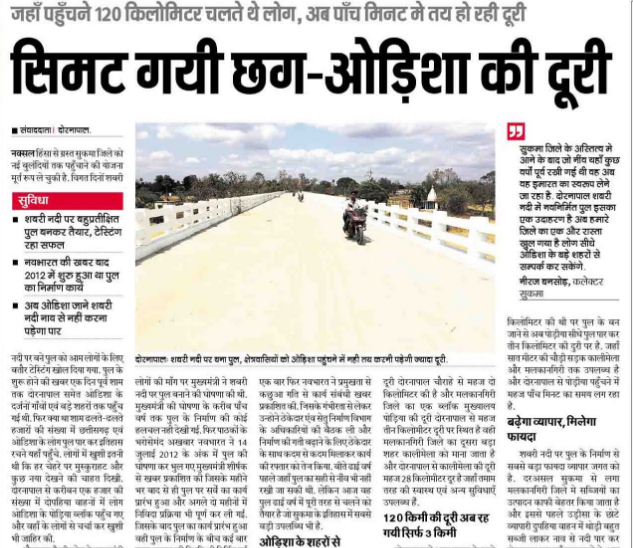In Goa, the incumbent BJP came crashing to 13 seats from 21 seats. The Congress jumped from a mere 9 seats to 17 seats, falling just 4 short of the half way mark. Being the single largest party, Congress was expected to form the Government in Goa, but as things panned out, it was the BJP which raced ahead with other parties. While it may be easy to blame BJP, the Governor, Modi etc, the moot question is the same question which the Supreme Court asked the Congress: Why the Congress didn’t approach the Governor with their so-called majority to stake claim to form the Government?
The easy answers are: Rahul Gandhi was too laid-back in his approach, Digvijay Singh bungled up the negotiations etc. But to get to the real answer, we must first understand a bit of history.
The current supremo of Goa Forward Party (which bagged 3 seats and allied with the BJP), Vijai Sardesai, was once a hard-core Congressman. He was the General Secretary of Goa Congress, and along with then CM Digambar Kamat, had formidable clout in the matters of the party. Then came the 2012 assembly elections, in which Sardesai was denied a ticket from the constituency he had nursed for years, Fatorda. Sardesai broke away, contested as an independent and won. This act, is termed by Sardesai, as the first betrayal by the Congress.
Cut to 2017, Sardesai had formed a regional front Goa Forward Party (GFP), which was essentially a one-man show. He had done so on the back of being one of the most vocal MLAs in Goa, fighting against the BJP, and usurping the role of leader of opposition from the Congress. For months before the elections, Sardesai had been harping on a mahagathbandhan with the Congress and other parties, to stop the split of “secular votes” to defeat the BJP. His seat-sharing demands may have been unreasonable but he wanted to ally with the Congress and other like-minded parties.
The Congress, led by former CM Luizinho Faleiro, kept on dilly-dallying on talks of forming a formal alliance. A faction headed by Faleiro was in favour of going to polls on its own, barring adjustments on some seats, while another faction headed by Digambar Kamat, was advocating pre-poll alliance with parties including GFP. Faleiro was said to be annoyed with Sardesai, accusing him of trying to blackmail Congress.
Finally, after hectic discussions, it was reported that Digvijay Singh had ruled out any alliance, which prompted GFP to declare that they would contest only on 4 seats, to prevent any division in non-BJP votes.
In response, Digvijay Singh announced that a seat-adjustment formula had been struck between the Congress and GFP, where-in Congress would not field candidates in 3 of the 4 constituencies where GFP had fielded its candidates. These 3 included the prized seat of Fatorda, which Sardesai was contesting from. Even as this was announced, media reports suggested that the local party leaders were upset with this move since the State Congress had repeatedly passed resolutions stating that they do not want to ally with GFP.
That should have been the end of the matter, but Congress had other ideas in mind. Even though Digvijay Singh had announced that Congress would not field anyone against Sardesai in his constituency of Fatorda, on the last day of filing nominations, towards the closure of the process, Fatorda block Congress committee president Jose D’Silva filed his papers as a Congress candidate in Fatorda, blessed by papers signed by none other than Congress President Faleiro. With this, the Goa Congress had gone back on its word and once-again double crossed Sardesai, who terms this as the second betrayal.

In the end, the sham of seat-adjustment was shattered, and the same Digvijay Singh announced that the Congress would contest on 37 seats, and support candidates in the remaining 3 seats. Sardesai too in the end backed an independent candidate in the constituency of Faleiro.
The story from here is familiar. Faleiro led the Congress to a commanding position of 17 seats. Having led the party, he must have naturally assumed to be the Chief Minister of the Congress once the Government is formed. But GFP leader Sardesai, who had emerged king-maker with 3 seats, had not forgotten the treachery of Faleiro. To add to his dislike for Faleiro, was his close association with Digambar Kamat, who was the former CM of Goa and the leader of the other faction. Obviously, GFP demanded informally that they would ally with the Congress only if Faleiro would be relegated to a smaller role in the party.
This is where the talks broke down. The Congress began scrambling internally to arrive at a consensus and elect a leader from amongst themselves, who would be acceptable to the party, as well as the alliance partners. This was not an easy task since the party had 4 former CMs as MLAs, and also a few younger MLAs aspiring to move up the ladder. Add to this Faleiro’s claim for the chair of the CM, considering he revived the dead Congress.
While these talks were on, the BJP sensed an opportunity and within record time, sealed deals with ideological adversaries like GFP. The Congress was left sorting their internal issues whereas the BJP had worked out an alliance with a wide range of partners.
There could have been other factors behind GFP joining hands with BJP, the lure of better portfolios, the support of the Central Government etc, but in all of this, the crux remains this: Why Congress could not easily ally with GFP, even though Congress was the single largest party, and even though GFP was led by a former Congress man. In fact the other MLAs of GFP are also imports from the Congress.
The answer to this is the complete break-down of trust between the 2 parties, owing to skullduggery by the Congress. Irrespective of whether it was Faleiro who engineered the last-minute backstabbing, or whether it was Digvijay who double-crossed GFP, the fact remains, the Congress in Goa is again in shambles, with MLAs slamming the party leaders and rumours abound that the Congress would split anytime soon.
At this juncture, one remembers BJP leader Murli Manohar Joshi’s analogy:
Like an orange which comes apart when peeled, the Congress party falls apart when given power.







